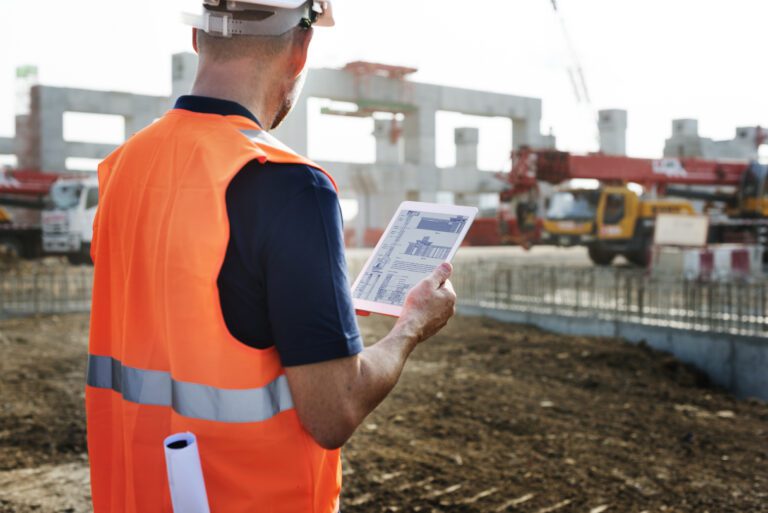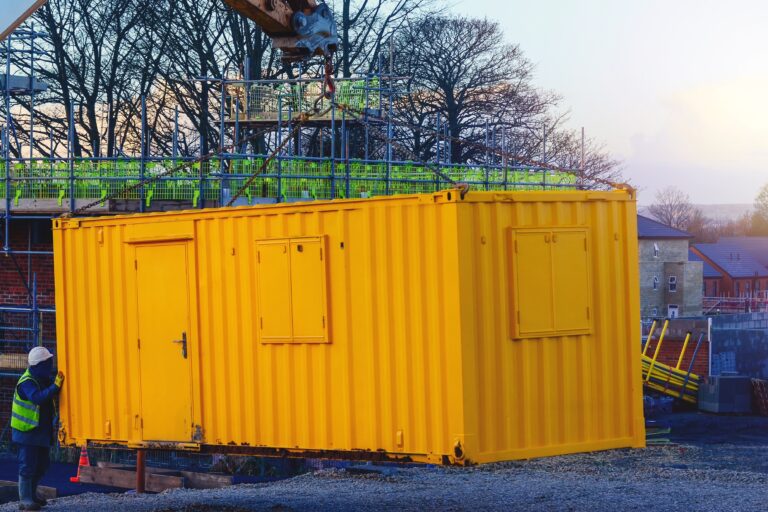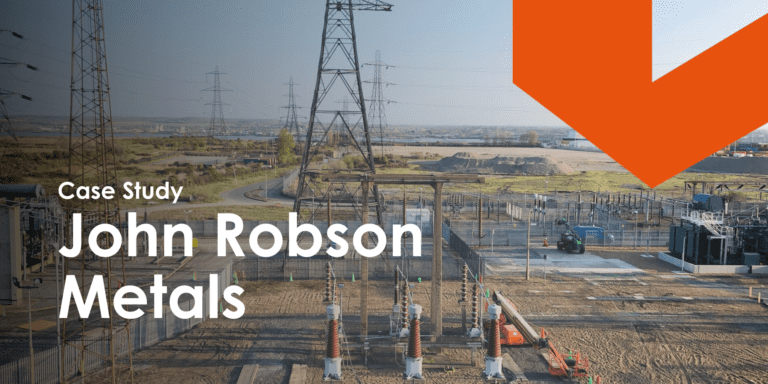24th May, 2022
Construction Supply Chain Strategy: The Benefits to Your Business
Having an effective construction supply chain strategy has various benefits worth knowing. Learn about them to help your own supply chain. Read on here.
It goes without saying that having an effective construction supply chain is crucial. So crucial, when you consider the benefits of having a set strategy in place, one that mitigates issues to ensure that every part of a project runs as smoothly as possible.
Supply chain management is an important part of construction, especially on large-scale projects where there are a lot of moving parts, and various individuals/parties involved in the process. Project managers, contractors, architects, and material suppliers, all play a significant part in a supply chain.
In this post we are going to emphasise the importance of supply chain management as a whole. We’re going to be looking at what benefits having a construction supply chain strategy brings, what ways you can strengthen your own supply chain, and more.
Let’s start by defining what a construction supply chain is before switching gears to supply chain management in construction.
Fully understanding both is essential if you’re to fully grasp the benefits they can provide your business. That being said, if you are familiar with the terms, feel free to skip straight to other parts of the post.
What is a Construction Supply Chain?
In construction, a supply chain is the term used to describe the connection between multiple companies that take a series of standard materials, products, or services, and develop them into a finished product for a particular client.
The supply chain is typically broken down into five unique stages, each run by project management. The five stages make up the basic components of supply chain management. These consist of:
- Plan
- Source
- Make
- Deliver
- Return
It’s important to note that this is part of the Supply Chain Operations Reference (SCOR) Model, which is one of many supply chain strategy models you should be aware of. The other is the Supply Chain Management (SCM) model, which is the main model we are covering in this post.
Not all supply chain strategies follow the same processes. Although, most will consist of the following components:
- An Initial Supply Chain Plan
- Sourcing Raw Materials/Services
- Construction of the Project
- Delivery Operations/Logistics
- Reverse Logistics for Certain Items

What is Supply Chain Management in Construction?
Supply chain management in construction refers to the organisation of supply flow over several chains. In terms of what is transported, this can be information, labour, or raw materials.
Construction-based supply chain management seeks to understand and improve these processes to deliver a project on time and to a set standard. In other words, SCM will impact how this process rolls out which will affect the project’s overall success.
In construction, most supply chains will include the following parties, all of whom come together to work on a single project:
- Engineers
- Architects
- Contractors
- Material Suppliers
- Subcontractors
The Benefits of a Construction Supply Chain Strategy
So we’ve looked at what a construction supply chain is and what management does to help facilitate this process. Now it’s time to look at the benefits of having a construction supply chain strategy.
Do keep in mind that these benefits will apply to anyone with a supply chain strategy in place. What model they’ve chosen is somewhat irrelevant when you consider how broad some of these benefits are.
We’re going to be looking at each of these benefits in greater detail below, but here’s a quick rundown:
- Cost-Cutting
- High Efficiency Rate
- Data Centralisation
- Enhanced Communication
- Fewer Material Defects
- Overall Satisfaction
Cost-Cutting
The first benefit of having an effective construction supply chain strategy is arguably the most important – more-so if one of your primary goals is to keep within your budget.
SCM can help cut costs in multiple ways. For example, it can help outline areas with high logistics costs. Understanding where the majority of your budget is going could help you head in a different direction, sourcing materials elsewhere and at a much cheaper rate.
What’s more, a thorough SCM strategy will help management evaluate the current process and determine weak links. Weak links that you can maybe change to help cut costs in other areas of the supply chain.

High Efficiency Rate
All construction-based projects come with uncertainties, that much is true. Uncertainties like increased product costs, shortage of labour, and other emergencies can really affect your project timelines. But there are ways to plan for this to help cut costs in other ways as part of a construction supply chain strategy.
Simply having this plan in place will allow you to plan for any of these costs, thus improving your efficiency rate as a result! For example, developing a backup plan in case certain materials aren’t delivered, will cover you on the off chance that something bad does happen.
Data Centralisation
Technology is an essential part of SCM when it comes to planning what is required, sourcing materials directly, communicating with other parts of the chain, and everything in between.
What’s great about leveraging technology is how that data then becomes centralised, making it a lot more visible as a result. This will benefit project managers, stakeholders, and anyone else involved in your supply chain strategy.
Having everything you need in one dedicated platform is exactly what we offer here at YardLink, but more on that later.
Enhanced Communication
Like data centralisation, enhanced communication is another major benefit of having a construction supply chain strategy in place.
Construction projects can be very complex given the amount of detail there is involved. Not to mention, how many people are typically involved in these projects overall!
Fragmented communication can lead to costly problems later down the line, and even damage the relationships you have with others both internally and externally, which is where supply chain management can help.
Enhanced communication will enable you to access reports, forecasts, quotes, and the current status of the project with ease. Streamlining communication will increase your output and help everyone involved deliver the project on time.
What’s more, effective communication will also ensure that quality control is maintained. Which brings us to our next benefit.

Fewer Material Defects
The suppliers you choose to work with do vary, but you didn’t need us to tell you that. Knowing which suppliers offer better quality materials is key in delivering a project that meets the expectations of clients.
Material defects and other quality-based problems can be avoided with an effective construction supply chain strategy. Having someone in charge of maintaining quality will ensure that the project meets what is required, and even surpass expectations.
This will reduce the amount of waste produced too if the materials delivered aren’t up to a certain standard. That is because the contractors and engineers are not delivering poor materials, or doubling up on each other’s efforts.
Implementing quality requirements will help guide suppliers and contractors, just remember to over-specify on the details.
Overall Satisfaction
Easily one of the main benefits of having a construction supply chain strategy is how it can be used to develop lasting relationships with suppliers, not to mention, clients.
Building a relationship with suppliers is great for confirming a level of consistency in terms of the quality of your projects and when it is completed by. In other words, nurturing the relationships you have with other parts of your supply chain will only boost your efforts moving forward.
What Does an Ideal Supply Chain Look Like?
An Ideal construction supply chain should be as simple as possible, leaving no room for inefficiency. Of course, anything project managers can do to streamline this process will benefit what strategies are put in place.
This is why we’d recommend you take advantage of the appropriate technology to help cut down on the amount of paper-based invoicing you need to do. Technology will also help improve how easy it is for you to gather and distribute information.
Identifying any potential problems early will help bypass any delays that could impact when the project is completed. Project delays are one of the main issues facing project managers generally, which means having a solution is more than required.
As you can imagine, how complex the chain is will depend entirely on the project at hand. Small-scale projects won’t require as much attention in terms of the constriction supply chain strategy put in place.
Regardless, the plan put in place by project management is key. This is why we’re stressing the importance of supply chain management, as without a strategy in place, the project simply wouldn’t happen on time and within budget.

How to Set Up an Effective Construction Supply Chain Strategy
At this point you might be wondering how you can set up a construction supply chain strategy of your own – or improve one you’ve already implemented. This is where this section will come in handy.
The first thing any project manager should do is identify those involved within the chain (i.e. suppliers), preferably once a project has been confirmed. If it helps, try creating a list of everyone involved within the process, from partners, to engineers, to specialty contractors.
Outlining who and what you need will help you understand where you’ll allocate costs and resources. Not doing this effectively could result in delays, additional costs, and more troubles. So be sure to either research who you plan to work with fully, or go with a reputable option.
Reputable being: anyone you know works well based on prior experience with them.
From there, you should integrate the teams, so that everyone that needs to communicate back and forth can do so. Utilising technology is instrumental here when you consider how many individuals could be involved in the chain.
Once everything has been organised, all you need to do then is ensure that the project runs as smoothly as possible, which as we’ve explained in this blog, shouldn’t prove too difficult if you have the right supply chain strategy in place.
Construction Supply Chain Strategy: The Benefits to Your Business
Do you now understand the importance of supply chain management? We hope so, given what we’ve covered.
To recap, a construction supply chain strategy is incredibly important to have, not only for project managers, but for everyone else involved in the chain too!
Having a SCM in place also comes with a range of benefits, such as cut costs, a high efficiency rate, centralised data, enhanced communication, fewer marketing defects, and an overall increase in satisfaction.
Again, the use of technologies will determine the effectiveness of your construction supply chain strategy. Internet of Things (IoT), and even artificial intelligence (AI), can help you in more ways than one – be it through quality improvement, resource consumption, and cost reduction.
Technology, generally, can aid project managers in multiple areas of the job, such as the hiring of tools and equipment, which is where YardLink makes the difference. Our dedicated hiring platform was designed to make life, both on and off the site, a lot easier.
Get in touch for more information.
YOU MIGHT ALSO BE INTERESTED IN















